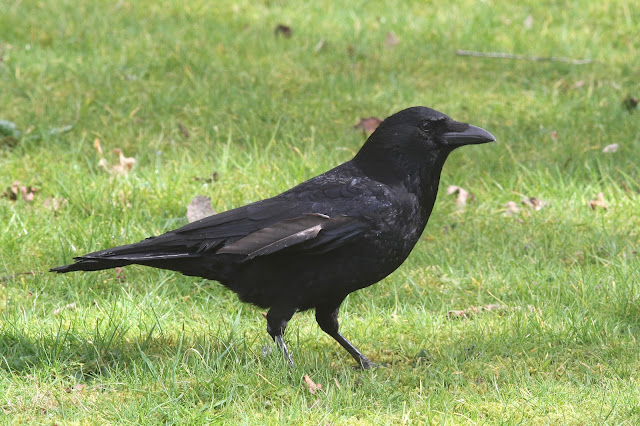Unusually for a shiny black bird, the crow's feathers seem to show little colourful iridescence when the light catches them, perhaps adding to its sinister appearance. The black-rimmed black eye surrounded by black feathers makes it a difficult photographic subject.
This is Thomas Bewick's image of the crow, published in The History of British Birds in 1797.
He wrote "They feed on putrid flesh, and garbage of all sorts; likewise on eggs, shellfish, worms, and insects. These wary birds live in pairs, and are commonly seen together flying at a great height, out of the reach of the gun, while they are prowling over the country in search of their food, which, with penetrating eye and acute scent, they discover afar off.".
A pair of carrion crows has nested in my garden each year since 2011. Before that there was a rookery here but the number of nests slowly declined from 44 in 1990 to six in 2010 and after that the rooks didn't return. Carrion crows are solitary nesters so it is interesting that I have often seen four birds in my wood in recent weeks - perhaps the other two are younger non-breeding birds.
Carrion crows are found throughout the British Isles apart from Ireland, the Isle of Man and north west Scotland, where there are hooded crows (Corvus cornix) instead.
Carrion crows seem from this map to be encroaching on hooded crow territory.
Across the country carrion crows are doing well with a doubling of their numbers over the last 50 years.
Carrion crows are relatively common garden birds. The BTO Garden BirdWatch data show no medium-term trend.
Listen to the call of the carrion crow here. Listen to Chris Watson's BBC Radio 4 Tweet of the Day on carrion crow here. Read about Aesop's fable The Fox and the Crow here.










No comments:
Post a Comment